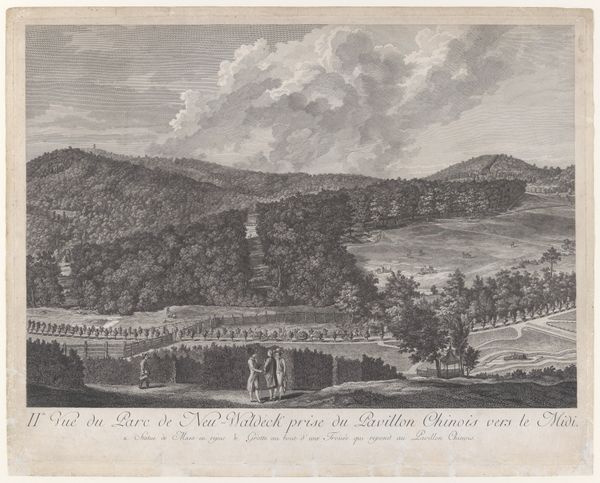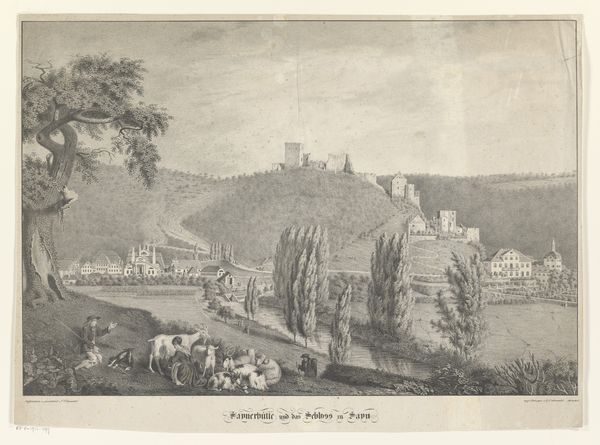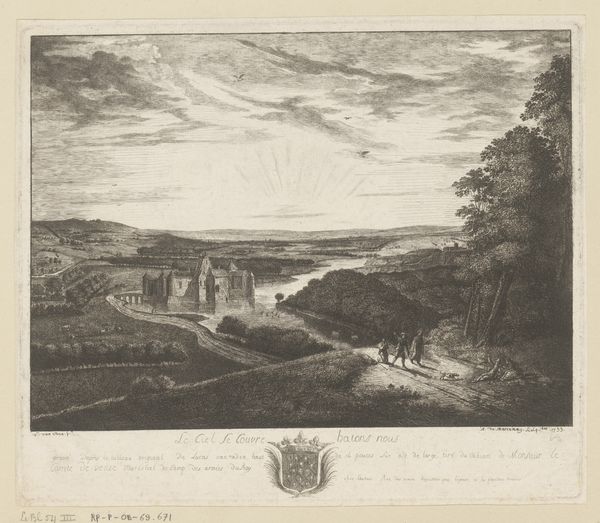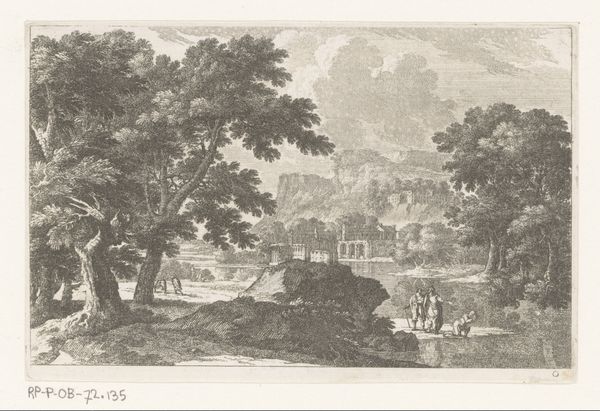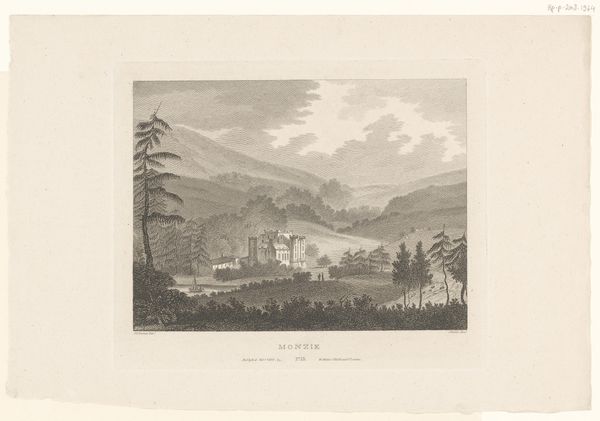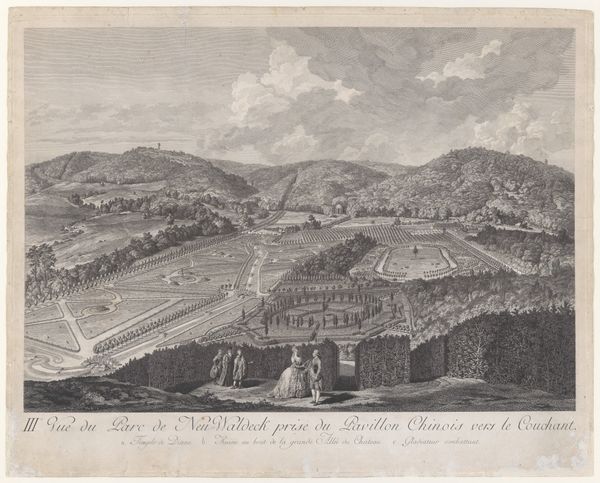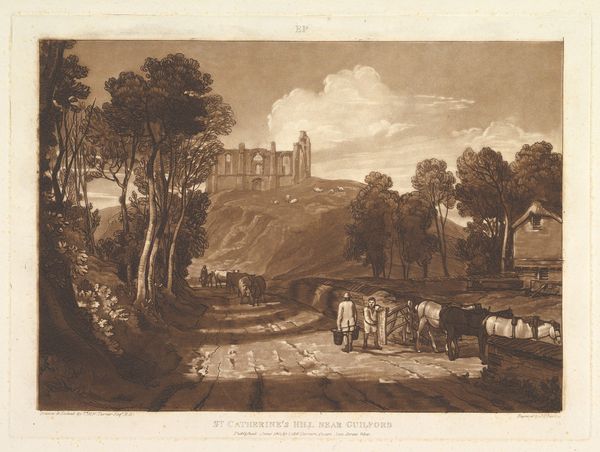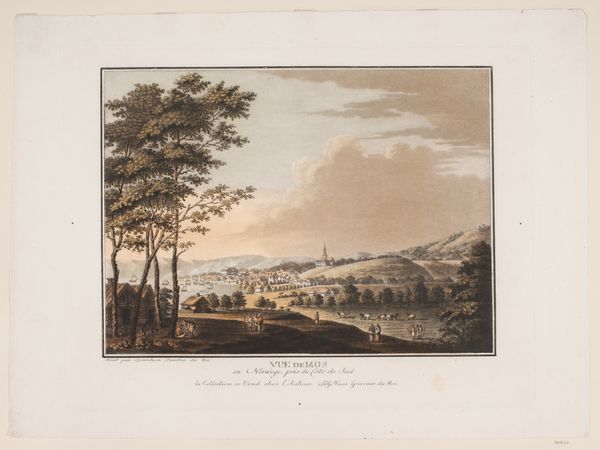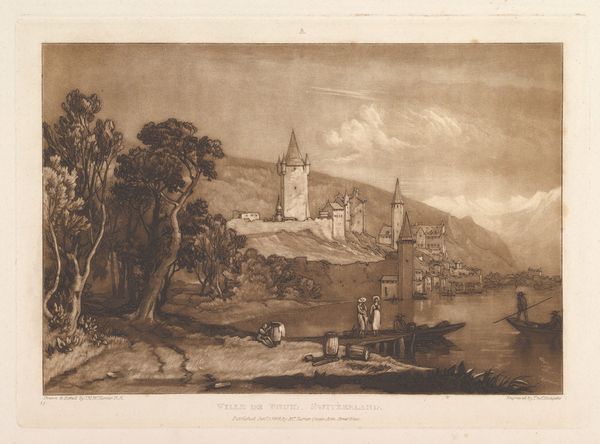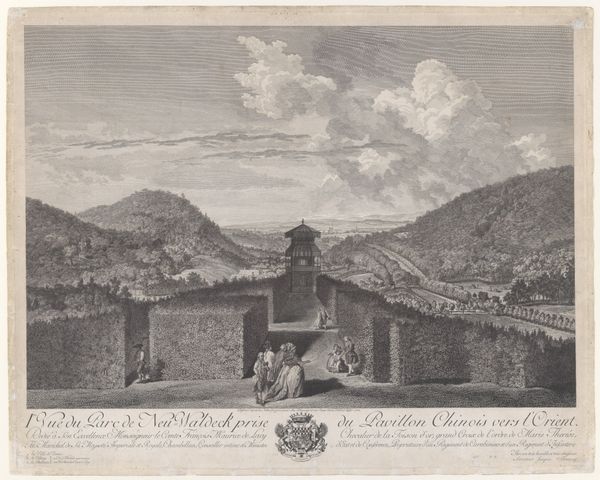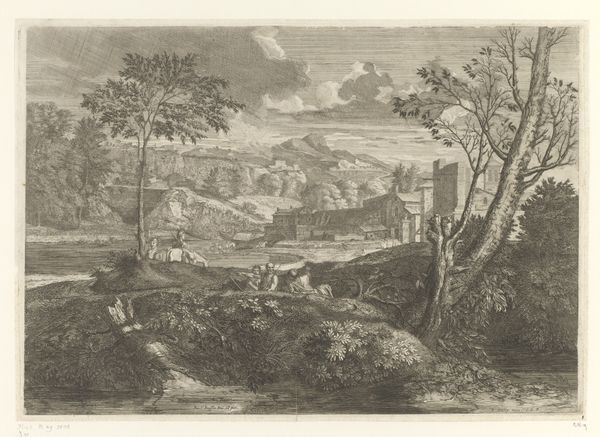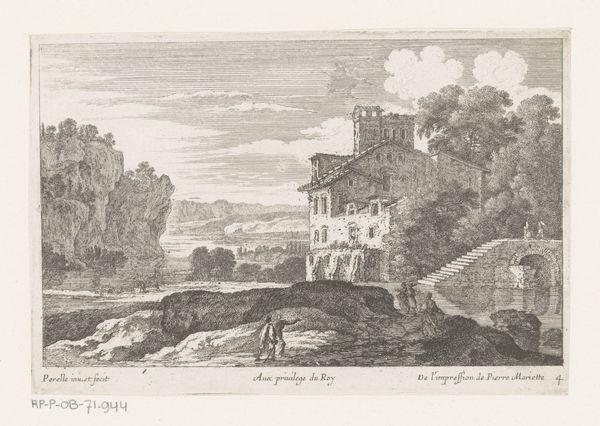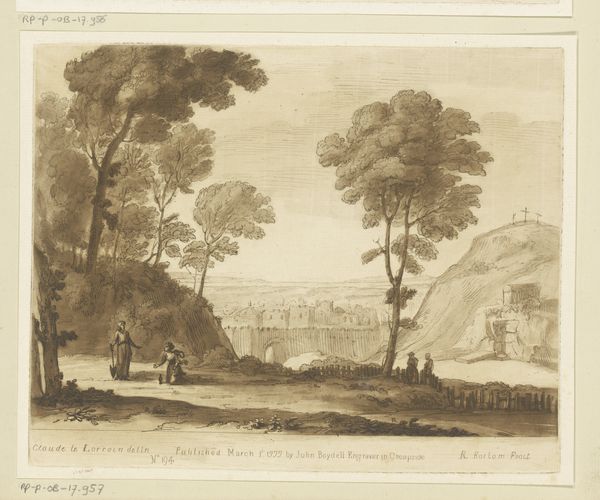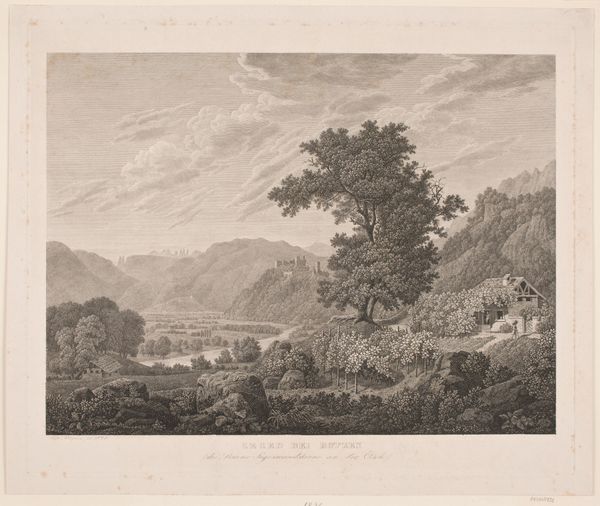
IVe Vue du Parc de Neu-Waldeck prise du Pavillon Chinois vers le Nord 1782
0:00
0:00
Dimensions: sheet: 20 1/2 x 25 5/8 in. (52 x 65.1 cm) plate: 19 13/16 x 25 3/8 in. (50.3 x 64.5 cm)
Copyright: Public Domain
Curator: Welcome! We're standing before "IVe Vue du Parc de Neu-Waldeck prise du Pavillon Chinois vers le Nord," an engraving and etching by Jakob Matthias Schmutzer, dating to 1782. Editor: My first impression is one of meticulous order contrasting with a wilder, untamed background. The sharp lines of the hedgerows lead my eye into the hazy distance. Curator: Indeed, Schmutzer’s piece offers us a glimpse into the Rococo era's fascination with landscape and constructed social spaces. It presents a perspective from the Chinese Pavilion looking north, inviting consideration of power, privilege, and constructed viewpoints of the landed gentry. Editor: The formal arrangement certainly conveys a sense of control, a visual representation of man's dominion over nature. I find the linear perspective compelling. Notice how the artist employs diminishing scale and careful shading to convey depth. Curator: Absolutely. But I’d also invite viewers to reflect on the implied labor. Manicured landscapes such as this are products of specific socioeconomic conditions of eighteenth-century Europe, shaped by the labor of many so that the few might enjoy the view. Editor: That’s an important point to consider, how idealized depictions often mask underlying realities. But let's also acknowledge the exquisite technical skill on display, the cross-hatching creates wonderfully delicate tonal variations! The textures alone are worth studying. Curator: Of course. And understanding the technique and artistry of Schmutzer’s work allows us a window into the prevailing attitudes about property, class, and taste that marked the era in which the artist operated. Consider, even the inclusion of a 'Chinese pavilion' represents the complicated interplay between colonial influence and design during the late 18th century. Editor: Very interesting. Focusing on the formal elements has deepened my appreciation for the sheer skill and artistry present. Curator: Examining through the lens of social and political contexts helps me view the engraving beyond aesthetics, toward a greater understanding of 18th-century society and cultural exchange.
Comments
No comments
Be the first to comment and join the conversation on the ultimate creative platform.
